I asked an Ontario native plant gardening community on Facebook what the most annoying invasive species is.
I got over 300 answers.
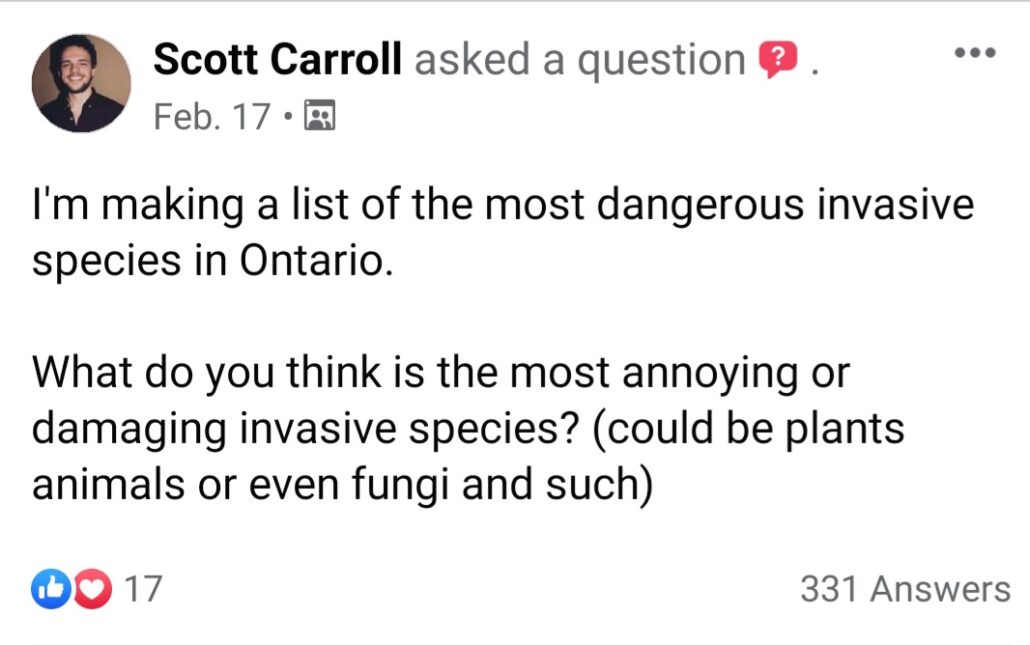
Invasive plants and animals are a threat to native species. These species labeled as invasive are usually aggressive in one way or another and out-compete native species for dwindling resources.
How do they get here in the first place?
I don’t know a single one that got here without the help of humans.
Top 66 Worst Invasive Species in Ontario
Rules:
To make this list fun, I’ve made up some rules that I’m going to use to rank the different invasive plants and animals.
- 1 point for every commenter on my post who mentions the species in a negative light
- 1 point for every negative attribute (Bad Stuff) I find about the species
- Additional points may be awarded for severe attributes
- -1 point for redeeming qualities
- The species must be currently invasive in Ontario. Invasive species that haven’t been found here or have been eradicated, and aggressive species that are native to Ontario are disqualified.
Before I get on with my list I want to clarify that not all invasive species are necessarily bad and not all native species are necessarily good. The bad traits that I picked out are subjective and dependant on who’s perspective we take.
To me, “bad stuff” is any trait that allows the species to directly harm others, reproduce more effectively, or otherwise out compete natives for resources. If the invasive plant has traits that make it useful to humans, I’m counting them as bad traits since we will help protect and spread them.
I got way more answers than I was anticipating so forgive me if I missed anything. To keep loading speeds down, I’ve only included pictures for the top 10 invasive species in Ontario. Also, considering this was posted in a gardening community, I expect some bias towards invasive plants.
If you have anything to add please leave a comment and I will include it when I update the list!
66. Apples
Native to: Asia
Bad stuff:
- Host of Apple Cedar Rust
- Hops between Eastern Red Cedars and Apple trees in a 2-year life cycle
- Spores can travel 6-8km
Notes: The real bad guy here (and where the 1 vote came from) is the apple cedar rust carrying fungus which can’t survive (or infect red cedars) without apple trees. Apples are not usually considered to be invasive because of their value as food to humans and wildlife. -1 point
Votes: 1
Points: 3
65. Starlings
Native to: Europe
Bad Stuff:
- Chases away competing “cavity-nesters”
- Large flocks can damage crops
- Eats and spreads invasive seeds
- Sold as pets for their singing and mimicking abilities
Notes: This bird was released in New York by the American Aclimatization Society – an organization who’s goal was to populate America with birds from Shakespeare. They are known to eat invasive insects like the Japanese Beetle and their population has recently been on decline in North America. -2 points
Votes: 1
Points: 3
64. Bloody Red Shrimp
Native to: Eurasian lakes and rivers
Bad Stuff:
- High reproductive rate – densities up to 500 shrimp per square meter
- Eats small native plants and animals (and each other!)
Votes: 1
Points: 3
63. Teasel
Native to: Europe
Bad Stuff:
- Tall
- Prickly
Votes: 1
Points: 3
62. Bull Thistle
Native to: Africa, Asia, Europe
Bad Stuff:
- Thorny
- Feather-like hairs on its seeds help it spread very far very quickly
Votes: 1
Points: 3
61. Sea Lamprey
Native to: Atlantic coast
Bad Stuff:
- Lampreys are parasitic eels that feed on native fish
- Damage the $7 billion fishing industry in the great lakes
Notes: There are ongoing control measures in place that have been quite successful in reducing sea lamprey populations.
Votes: 1
Points: 3
60. Scotch Pine
Native to: Scotland
Bad Stuff:
- Most popular Christmas tree variety
- Grows in many soil conditions
Votes: 2
Points: 4
59. Japanese Beetle
Native to: Japan
- Will eat pretty much any plant
- Attacks plants in groups
- Already well established and proven difficult to eliminate
Votes: 1
Points: 4
58. Spotted Knapweed
Native to: Europe
Bad Stuff:
- Can produce 140,000 seeds per year
- Changes soil chemistry
- Dead plant material increases fire risk
Votes: 1
Points: 4
57. Stone Moroko
Native to: Asia
Bad Stuff:
- Over predation of native crustaceans and juvenile fish
- Carrier of parasites and diseases
- Carrier of “oriental liver fluke” – a parasite that infects humans
Votes: 1
Points: 4
56. Zander
Native to: Europe, Asia
Bad Stuff:
- Overpredation of native fish
- Known to hybridize with native fish
- May spread new diseases to environments with unsuspecting immune systems
Votes: 1
Points: 4
55. Bugleweed
Native to:
Bad Stuff:
- Spreads by runners
- Forms dense mats
Votes: 3
Points: 5
54. Pampas Grass
Native to: South America
Bad Stuff:
- Sold as ornamental plant
- A single stand can produce millions of seeds per year
- Sharp leaves can cause harm to humans and wildlife
Votes: 2
Points: 5
53. Butterfly Bush
Native to: Asia
Bad Stuff:
- Lots of nectar but no fruit
- Produces 100,000 seeds
- Sold as ornamental
- Sold specifically to attract butterflies, distracting them from native plants
Votes: 1
Points: 5
52. Creeping Charlie
Native to: British Isles
Bad Stuff:
- Toxic to horses, pigs, and cows.
- Can grow from root fragments
- Forms dense mats
- Imported as ornamental
Notes: high in vitamin C and good in tea, while the plant can grow back from root fragments, if you start at the edges and cultivate it consistantly, I think it should weaken the plant and eventually shrink it down to a manageable size.
Votes: 1
Points: 5
51. Siberian Elm
Native to: Siberia, Asia
Bad Stuff:
- Winged seeds spread seeds in the wind
- High germination rate
- Planted in long rows for hedges
- Brittle wood snaps and falls in storms
Votes: 1
Points: 5
50. European Water Chestnut
Native to: Europe, Asia, Africa
Bad Stuff:
- Used in water gardens
- Forms dense mats on the water surface
- Sharp spines on nuts aren’t fun to step on
- Decreases oxygen levels in water
Votes: 1
Points: 5
49. Non-Native Earthworms
Native to: Europe, Asia
Bad Stuff:
- Decomposes leaves and plant material creating a layer of “humus”
- Great for non-native gardens
- Bad for native plants
- Causes erosion problems
Votes: 1
Points: 5
48. Rusty Crayfish
Native to: Ohio River Basin
Bad Stuff:
- Better at hiding from fish than natives
- Eats large amounts of plant material decreasing habitat for fish
- Eats fish eggs
- Females can carry 200 eggs under their tails
Votes: 1
Points: 5
47. Manitoba Maple
Native to: Manitoba
Bad Stuff:
- Grows fast, tall, and weak limbs
- Large limbs fall in storms
- Shallow roots hurt surrounding plants
- Leaves emerge early and fall late
Votes: 1
Points: 5
46. Asian Longhorned Beetle
Native to: Asia
Bad Stuff:
- No predators
- Burrows in and kills broadleaf trees (specifically maples)
- Insecticides aren’t effective
- Easily transported unnoticed in wood and untreated wood products
Votes: 1
Points: 5
45. Tansy
Native to: Europe, Asia
Bad Stuff:
- Toxic to humans and domestic animals
- Tufted seeds spread far in the wind
- Spreads by seed and root fragments
- Used by humans as medicine
Votes: 1
Points: 5
44. Water Soldier
Native to: Europe, Asia
Bad Stuff:
- Sold as ornamental water plant
- Forms dense mats of floating vegetation
- Affects water chemistry
- Sharp leaf edges can cut swimmers
Votes: 1
Points: 5
43. Burdock
Native to: Europe, Asia
Bad Stuff:
- May cause allergic reaction
- Slows blood clotting if ingested increasing risk of bleeding
- Spreads far by “burs” that stick to hair and clothing like velcro
Votes: 2
Points: 5
42. White Sweet Clover
Native to: Europe, Asia
Bad Stuff:
- One plant can produce 350,000 seeds in its second year
- Seeds can remain viable up to 80 years
- Toxic to animals
- 1 crown has up to 10 stems that reach 1.5 meters
- Nitrogen fixer
Votes: 1
Points: 6
41. Chameleon Plant
Native to: Asia
Bad stuff:
- Spreads by roots and by seed
- Car regrow from root fragments
- Deep roots are hard to remove
- Can tunnel under driveways, sidewalks, etc. and pop up on the other side
- Sold as ornamental
Votes: 1
Points: 6
40. Chaff Flower
Native to: Asia
Bad Stuff:
- One plant can produce over 1000 seeds
- Seeds travel long distances bu floating on waterways
- Grows up to 2 meters tall
- Small hooks help seeds stick to clothing or fur
- Forms dense patches
Votes: 1
Points: 6
39. Oriental Bittersweet
Native to: Asia
Bad Stuff:
- Climber vine
- Sold as ornamental plant
- Can reach up to 30 meters tall
- Spreads by seeds and by roots
- Strangles and topples large trees
Votes: 1
Points: 6
38. Creeping Thistle
Native to: Europe, Asia, Africa
Bad Stuff:
- Spreads quickly with vegetative shoots and seeds
- Seeds have umbrella-like shape that carries them far in the wind
- Thorny
- Regrows from root fragments making it difficult to kill
Votes: 2
Points: 6
37. Brazilian Waterweed
Native to: South America
Bad Stuff:
- Reproduces by plant fragments
- Used in aquariums and water gardens
- Forms dense mats on the water surface
- Dead plant material smothers native seeds
- Poor habitat for fish
Notes: Not yet documented in Ontario. However, they are in all the Great Lakes except Lake Superior, so I’m making the assumption that they are already here and if not they will be soon.
Votes: 1
Points: 6
36. Multiflora Rose
Native to: Asia
Bad Stuff:
- Thorny
- Used for root stocks in rose grafting
- Climbing limbs
- Can produce 500,000 seeds per year
- Can regrow from stem or root fragments
- Leaves come out early and fall late
- Can grow in sun or shade
Notes: This plant produces “rose hips” which are an important winter food source for birds and can be eaten by humans too! It also provides great cover for animals like birds and rabbits. -1 point
Votes: 1
Points: 7
35. Himalayan Balsam
Native to: Asia
- Exploding seed pods helps them spread
- Produces lots of nectar, stealing attention from pollinators
- Forms dense stands
- 800 seeds per plant
- Used as ornamental
Votes: 2
Points: 7
34. Purple Loosestrife
Native to: Europe, Asia
Bad Things:
- Produces 30-50 stems per plant
- Each stem produces 2.7 million seeds
- One plant can produce over 100,000,000 seeds
Votes: 4
Points: 7
33. Carp (Bighead, Black, Silver, Grass)
Native to: Asia, Europe
Bad Stuff:
- Added to lakes as gamefish
- Burrows in search of food disturbing lakebeds and riverbeds
- Uproots aquatic plants
- Increases floating sediments stimulating algae blooms
Votes: 3
Points: 7
32. Non-Native Honeysuckle (Tartarian, Marrows, Amur, Bells)
Native to: Asia
Bad Stuff:
- Releases toxic compounds that kill other plants
- Grows up to 10 feet tall
- First leaves to emerge and last to fall
- Berries stay on in the winter attracting birds and spreading but have very little nutritional value
- Sold as ornamental plant
Notes: There are lots of native honeysuckles like fly honeysuckle, swamp honeysuckle, and northern bush honeysuckle. Their names might not be as nice but they are just as beautiful and much better at supporting local wildlife.
Votes: 2
Points: 7
31. Round Gobby
Native to: Black Sea, Caspian Sea
Bad Stuff:
- Reproduces several times per year
- Populated all 5 Great Lakes in under 10 years
- 100+ fish/m2
- Feeds aggressively on insects, eggs, and small organisms
- Often eats its direct competitors (other bottom feeders)
- Direct threat to native species like Northern Madtom, Eastern Sand Darter, and native Mussels
- Linked to outbreak of disease in fish and fish-eating birds (botulism type-E)
Votes: 1
Points: 8
30. Black Alder
Native to: Europe
Native Alternatives: Green Alder, Speckled Alder
Bad Stuff:
- Grows in tall dense stands
- Degrades wetlands
- Adds too much nitrogen to soil for native plants
- Direct threat to native Rose Mallow and Hoptree +2 points
- Affects water drainage
Votes: 2
Points: 8
29. Hemp Borer
Native to: Europe
- Digs tunnels in crops like hemp, corn, peppers, beans, potatoes, tomatoes and apples +7 points
Votes: 1
Points: 8
28. Variegated Wormwood
Native to: Europe, Asia
Bad Stuff:
- Spreads by root and by seed
- Can grow from root fragments and stem cuttings
- Can cause skin irritation and allergic reactions
- Grows in sun and shade
- Grows in many soil conditions
- Sold as ornamental
- Used for medicinal purposes
Votes: 1
Points: 8
27. Autumn Olive
Native to: Asia
Bad Stuff:
- Sold as ornamental plant
- Forms dense stands
- Changes soil chemistry (ads nitrogen)
- Can produce 200,000 seeds per year
- Adaptable to many soil conditions
- Grows quickly
Votes: 2
Points: 8
26. Black Locust
Native to: Appalachian Mountains
Bad Stuff:
- Toxic to humans and many animals
- Fast growing
- Harvested for timber
- Adaptable to bad soil conditions
- Can withstand cold and drought
- Affects soil chemistry (ads nitrogen)
- Thorny
Notes: I found several conflicting sources some claiming that the seeds are toxic and some claiming that they are edible. They all agreed that the leaves and bark of the plant is toxic.
Votes: 1
Points: 8
25. Zebra and Quagga Mussels
Native to: Russia, Ukraine
- Grows on and incapacitate native mussels
- Clogs water intakes
- Can colonize both soft and hard surfaces
- Increases toxic algae blooms
- Sharp, hard edges cut swimmers, boats, harbors, etc.
Votes: 3
Points: 8
24. Lily of the Valley
Native: Asia, Europe
Bad Stuff:
- Toxic to many animals
- Sold as ornamental
- Loved for their beauty and aroma
- Spreads quickly through all soil types
Votes: 4
Points: 8
23. Stinking Sumac
Native to: Asia
Bad Stuff:
- No native predators
- Grows quickly (2 feet/year)
- Imported as shade tree/ornamental
- Produces lots of seeds
- Affects soil chemistry
- Aggressive roots can damage buildings, roads, and other structures
- Advances the spread of the spotted lanternfly
Votes: 2
Points: 9
22. Barberry
Native to: Japan
Bad Stuff:
- Sold as ornamental
- Mildly toxic
- Changes soil chemistry
- Perfect breeding site for Deer Ticks (who carry Lyme disease)
- Lyme can cause arthritis, neurological problems, and paralysis
- Thorny
- Deer resistant
Votes: 2
Points: 9
21. Ivy
Native to: Europe, Asia, Africa
Bad Stuff:
- Used as ornamental
- Damages buildings
- Sap can irritate skin
- Fruit and plant material is toxic
- Can spread up to 15 meters every year
- Climbs structures and spreads over ground
- Can make tall or weak trees more likely to topple in the wind
Votes: 3
Points: 10
20. Pilewort
Native to: Europe, Asia
Bad Stuff:
- Sold as ornamental
- Forms thick mats
- Early emergence in spring
- Highly adaptable to poor conditions
- Can survive on hills and other low-nutrient soils
- No native predators
Votes: 4
Points: 10
19. Honeybees
Native to: Europe, Asia, Africa
Bad Stuff:
- Disproportionately covered in media compared to native pollinators
- Positive image created by such media (remember the Bee Movie?)
- Used by humans for honey
- 1,000,000,000 honeybees in Canada and the US alone (3 times the amount of people)
- Worse at pollinating than native bees
- Good at pollinating weeds like Japanese knotweed and dandelions
- Direct threat to 400+ native bee species
Votes: 3
Points: 10
18. Bindweed
Native to: Europe, Asia
Bad Stuff:
- “Binds” plants by twisting around them
- Intertwines, strangles, and topples native plants
- Seeds can persist for 30 years in soil
- Mild toxicity
- Roots can grow up to 3 meters
- Can regrow from root fragments
Votes: 5
Points: 11
17. Creeping Bellflower
Native to: Siberia
Bad Stuff:
- Grows in sun and shade
- Adaptable to poor soil conditions
- Adaptable to drought and flooding
- Not even deer will eat it
- Can grow back and spread from roots
- Roots grow very deep
- Produces 15,000 seeds in a summer
Votes: 4
Points: 11
16. Wild Parsnip
Native to: Europe, Asia
- Cultivated for edible root
- Sap can cause chemical burns, rashes, and blisters
- Forms dense stands
Votes: 9
Points: 12
15. Gypsy Moth
Native to: Europe, Asia, Africa
Bad Stuff:
- Ravenous larvae
- Eats over 300 species of trees alone
- Outbreaks leave trees naked, and the ground covered in droppings
- Outbreaks last for 2-3 years before plants die and moth population collapses
- Egg sacks can be transported on items without being noticed
Votes: 7
Points: 12
14. Devil’s Trumpet
Native to: Central America
Bad Stuff:
- Cultivated by humans for medicinal, spiritual, and recreational use
- Hallucinogenic properties
- Adverse reactions are common
- Fatal overdoses are common
- Can cause respiratory paralysis or heart failure
- Low doses of only 100mg of seeds can be fatal
- Effects can last many hours up to several days
- Users can become violent
- Users should avoid water, ledges, and heavy machinery
- Touching or even smelling it can be dangerous
Votes: 2
Points: 12
13. Boar Pigs
Native to: Europe
Bad Stuff:
- Massive (over 600lbs)
- Ravenous
- Can take down white-tailed deer
- Eats and destroys crops and livestock
- Eats and destroys native plants and animals
- Eats and destroys birds nests
- Creates disturbances in soil biology by tearing it up with their noses
- Carries parasites and diseases that threaten domestic herds
- Population can grow quickly
- Already well established in Saskatchewan and wreaking havoc
- Reported sightings in Ontario
Notes: This wild pig is the result of breeding European boars with American pork herds to increase diversity. Also known as: Hybrid Super Pigs, Feral Pigs, Feral Boars, Wild Pigs, Wild Hogs, etc.
Votes: 1
Points: 12
12. Norway Maple
Native to: Norway
Bad Stuff:
- Sold as ornamental
- Tolerant to urban environments
- Most common tree in Toronto
- Shallow roots hurt surrounding plants
- Large limbs fall in storms
- Leaves emerge early and fall late
Votes: 7
Points: 13
11. Emerald Ash Borer
Native to: Asia
Bad Stuff:
- No native predators
- Kills Ash Trees
- Kills 99% of tree population in 8-10 years
- Can fly and hitch hike on vehicles
- Infested trees need to be treated and disposed of to prevent further spread
Votes: 9
Points: 14
10. Perriwinkle

Native to: Europe, Asia
Bad Stuff:
- Poisonous to humans
- Poisonous to domestic animals
- Grows in dense patches
- Sold as ornamental
Votes: 13
Points: 17
9. Giant Hogweed
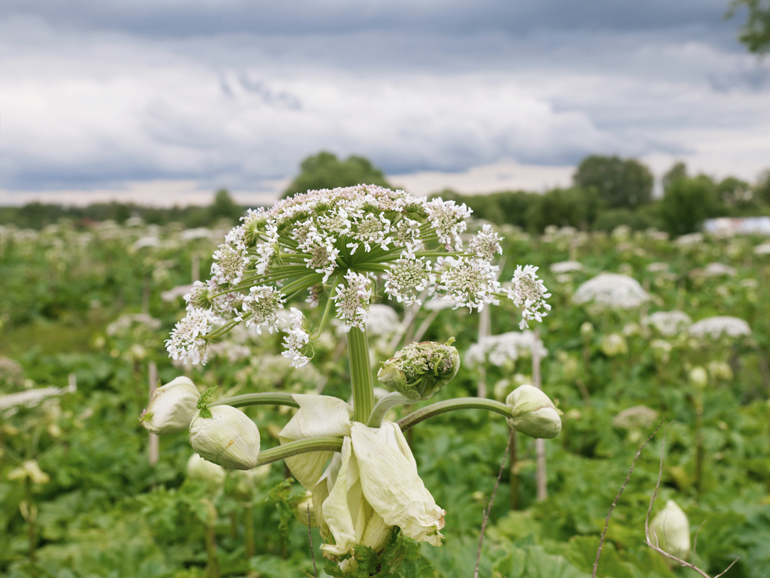
Native to: Western Caucuses
Bad Stuff:
- Imported as ornamental plant
- Grows up to 5.5m tall with flowerheads up to 1m in diameter
- Seeds are viable in soil for up to 15 years
- One plant can produce up to 120,000 winged seeds
- Sap contains toxins that cause severe dermatitis and blistering
- Sap causes severe sun sensitivity
- Sap can leave purple scars for up to 2 years
- Sap can cause blindness
Note: if you come in contact with giant hogweed, wash the infected area immediately, stay out of direct sunlight, and contact a medical professional.
Votes: 10
Points: 18
8. Goutweed
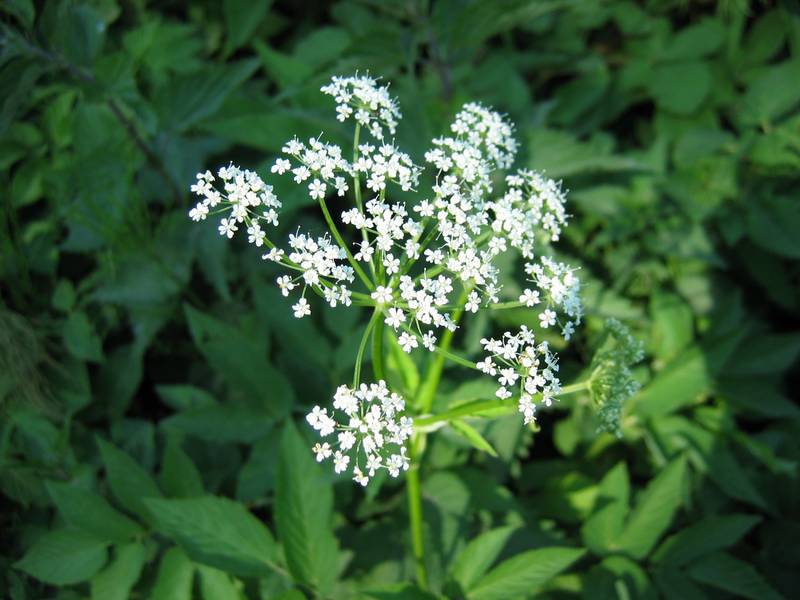
Native to: Europe, Asia
Bad Stuff:
- Imported as ornamental plant
- Spreads by seeds and root fragments
- Deep roots are nearly impossible to pull
- Can tunnel under sidewalks and roads
Votes: 16
Points: 20
7. Japanese Knotweed
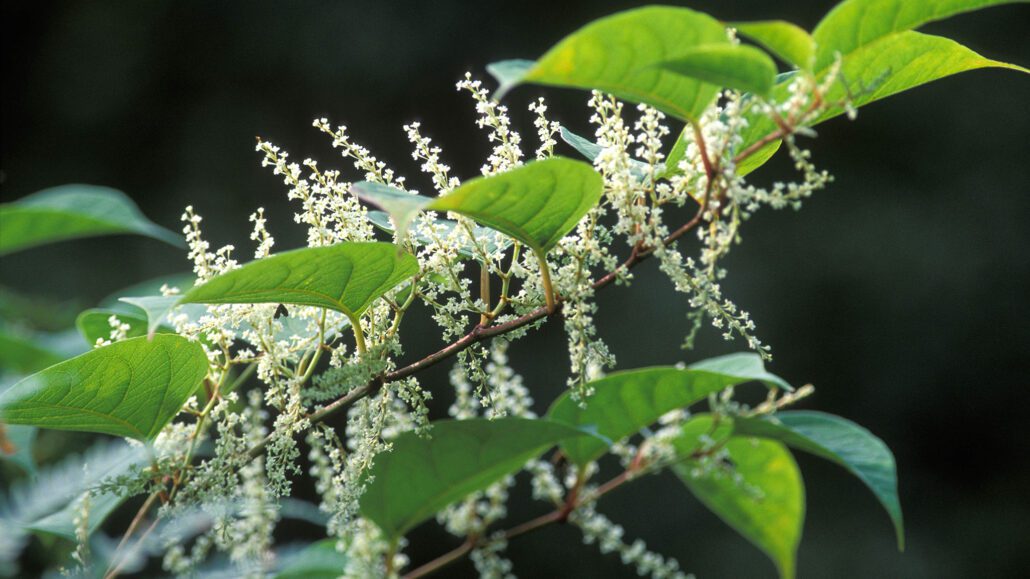
Native to: Asia
Bad Stuff:
- Sold as ornamental
- Causes skin irritation
- Regrows from root fragments and stem cuttings
- Expensive to remove
Votes: 16
Points: 20
6. Garlic Mustard
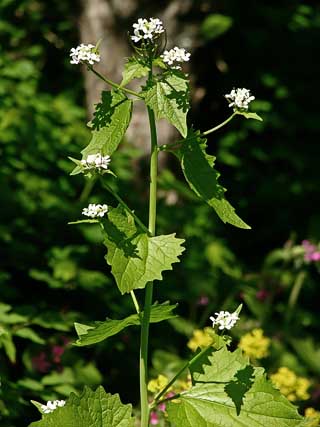
Native to: Africa, Europe, Asia
Bad Stuff:
- Inhibits soil fungi growth
- Kills feeding butterflies
- Can grow in sun or shade
- Toxic to most animals
- Cultivated for herbs by humans
Votes: 18
Points: 23
5. Buckthorn
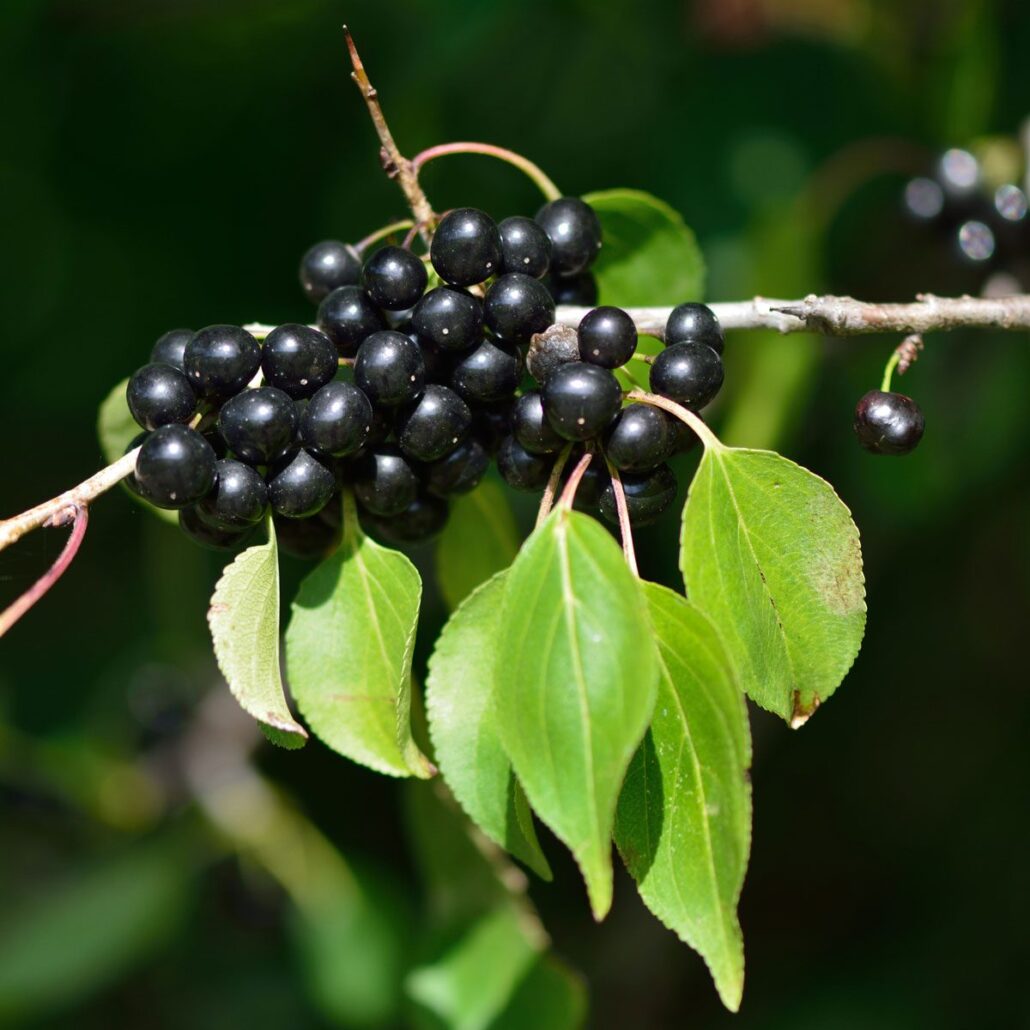
Native: Europe, Asia
Bad Stuff:
- Spread far and wide by birds and animals who eat its fruit
- Changes soil chemistry (adds nitrogen)
- Spreads Oat Rust
- Hosts Soybean Aphids
- Thorny
Votes: 19
Points: 24
4. Phragmites
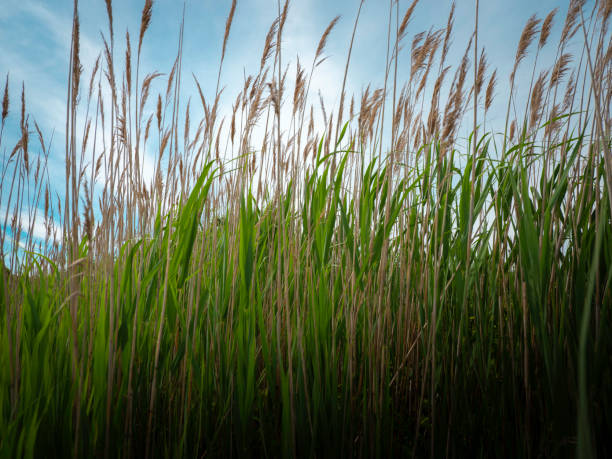
Native to: Europe, Asia, Australia
Bad Stuff:
- Sold as ornamental grass
- Forms dense stands
- Releases toxins into soil
- Lowers water levels
- Dead plant material is a fire hazard
- Spreads by root fragments and seeds
- Extensive root system can reach far away water and nutrients
Notes: like native phragmites species, invasive phragmites have high carbon sequestration rates. -1 point
Votes: 30
Points: 36
3. Dog Strangling Vine
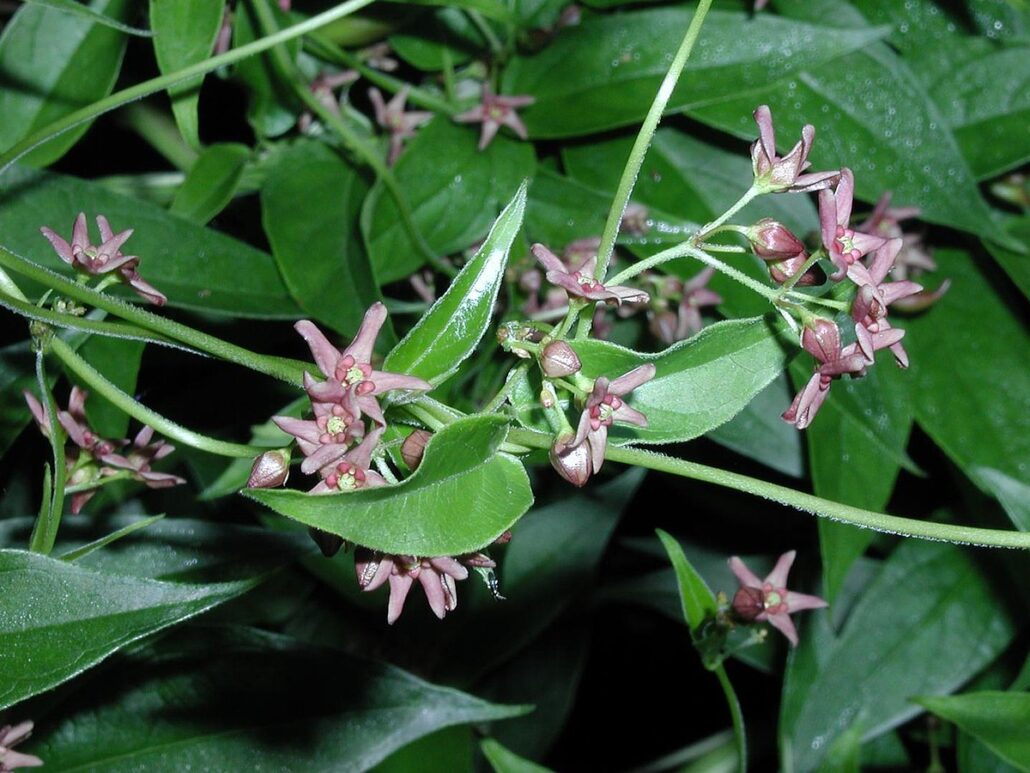
Native to: Europe
Bad Stuff:
- Strangles plants and small trees
- Sold as ornamental
- Produces 28,000 seeds per square meter
- Spreads by seeds and root fragments
- Difficult to walk through – giving it its name
- Leaves are toxic
- Monarch butterflies lay their eggs on it but the spawn don’t usually survive
Votes: 39
Points: 46
2. Cats
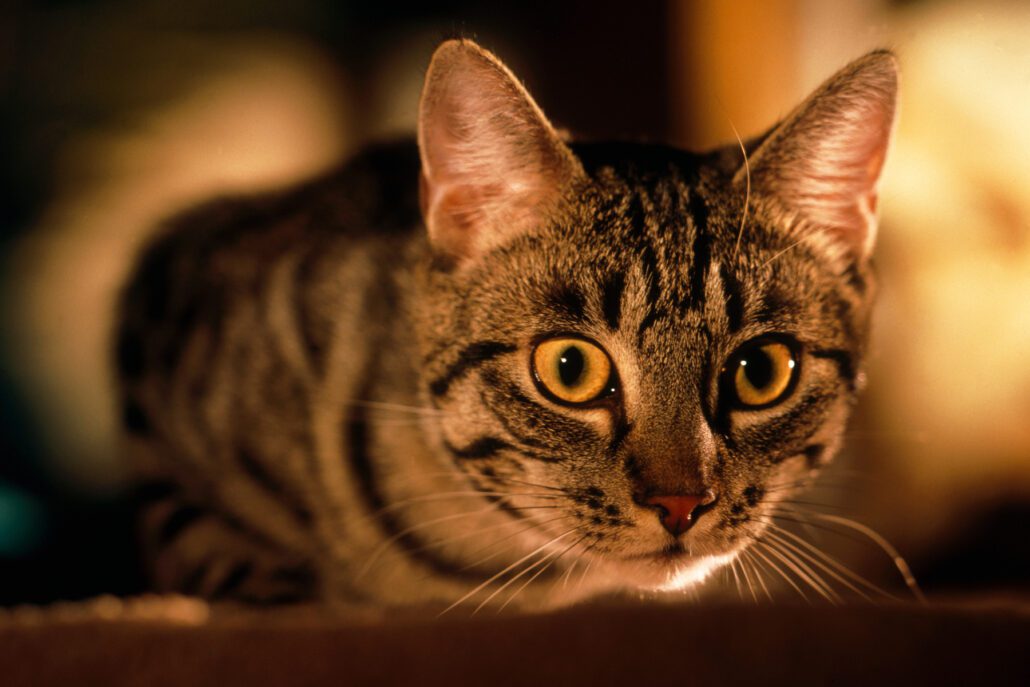
Native to: Africa
Bad Stuff:
- Extreme over-predation of small animals
- Contributed to extinction of 63 species of birds, mammals, and reptiles +63 points
- Estimates range from 100 million to 4 billion birds killed every year by cats
- Bred and sold as pets by humans
- Commonly contract rabies
- One female can produce up to 12 kittens a year
Notes: Outdoor cats are the problem, if you keep your cat inside, it can still protect you from unwanted mice or other vermin without over-predation and extinction of other species. We can also lessen the effects one cat can have on the environment by spaying or neutering domestic cats as well as feral ones.
Votes: 6
Points: 74
1. Humans
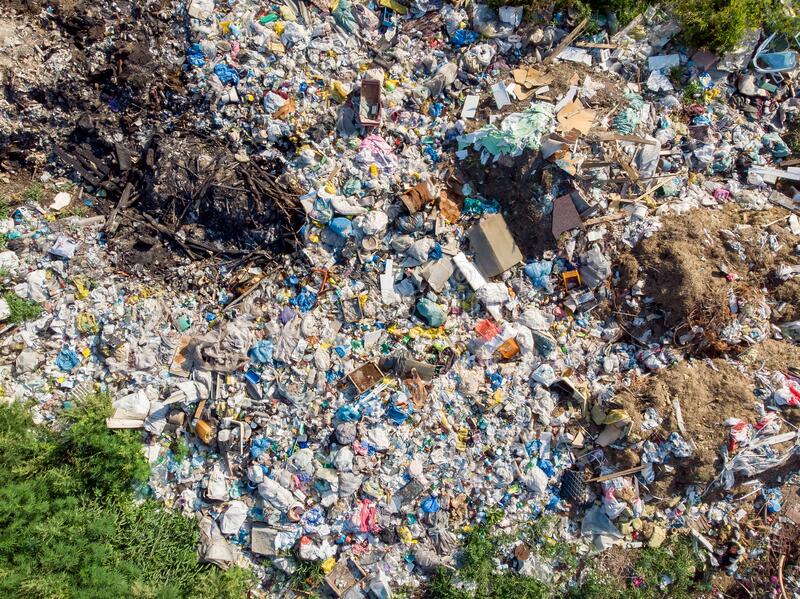
Native to: Africa
Bad Stuff:
- Strange obsession with exotic plants and animals
- Communal nesting sites called cities can stretch for thousands of square kilometers
- Destructive habits like mining and burning fossil fuels
- Have successfully colonized every continent
- Waring factions have created weapons of mass destruction
- Known to conduct harmful experiments on plants, animals, and even each other
- Ever increasing consumption of resources
- Advanced technologies allows them to defeat enemies like apex predators and viruses
- Destroys entire ecosystems for wood harvest and land development
- Exploitation of plants, animals, water, and other resources
- Pollution resulting in increased levels of greenhouse gasses
- Pollution resulting in emergence of microplastics in water and soil
- Controls natural processes to suit their own needs
- Boats spread invasive species by their hulls or in ballast
- Responsible for introduction of every other invasive species on the list +65 points
Notes: There have been populations of indigenous peoples here long before colonists arrived from Europe during the age of exploration. Native Americans have a reputation for being more in tune with nature and I would agree that there is merit to this notion. They do however still exhibit expansionist tendencies. If I were a native plant, I’d welcome Native Americans sooner than I would European colonists, but I’d still probably be better off with neither. As you can see, the line between native and invasive is sometimes blurry and hard to define.
Votes: 34
Points: 113
What do you think? Do these species deserve their spots on my list? If you disagree with me or think I missed something, please comment below. I love meeting my readers and learning new things from you.
